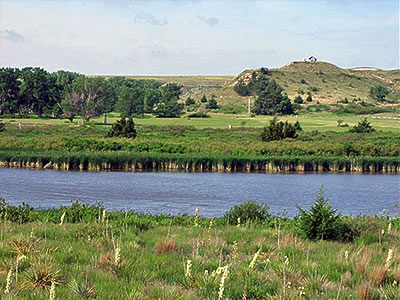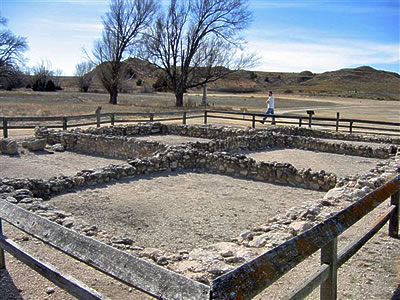
|
|
courtesy of Barb Shelton |

|
|
courtesy of Barb Shelton |

|
|
courtesy of Barb Shelton |
Lake Scott State Park is a finalist for the 8 Wonders of Kansas because
of its history, its role as an oasis in an otherwise dry land, and its
craggy canyons providing sudden and surprising relief on the High
Plains of western Kansas!
Like an oasis in the desert, the Lake Scott area stands out from the
typical High Plains landscape of western Kansas, not only because of
water, trees, and vegetation but also because of the unexpected relief
here in this otherwise flat landscape. Lake Scott is situated in a
valley carved into the steep bluffs of the Ogallala Formation, composed
of sand and gravels that
have been naturally cemented together. These rocks rim the steep
canyons and draws that surround the lake.
The Ogallala is a water-bearing formation in many places. Here the
Ogallala is underlain by much older Niobrara Chalk, and water flows out
from this contact between the Ogallala and the Niobrara at the rate of
hundreds
of gallons per minute, flowing into the lake, which is also fed by
Ladder Creek. Among the most important springs is Big Spring, which
alone produces more than 300 gallons of water per minute, making it one
of the largest
springs on the Kansas High Plains.
Whitetailed and mule deer are common. Beaver dams are seen along Ladder
Creek. Swift foxes, with their large ears, are seen in the area. The
area is also known for its large variety and number of reptiles.
Famous sites within the park are the El Cuartelejo Pueblo Indian Ruins
built in the late 1600s and the 1909 Steele Homestead made out of
sandstone.
Today there is camping, fishing, canoe & paddle boat rentals, and trails for hiking and horseback riding.
Location: 14 miles north of Scott City on U.S. 83, then 3 miles northwest on K-95.
Hours and admission charge: State park entrance charge.


